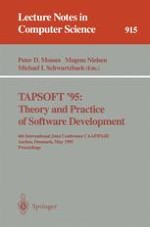This volume presents the proceedings of the Sixth International Joint Conference on the Theory and Practice of Software Engineering, TAPSOFT '95, held in Aarhus, Denmark in May 1995. TAPSOFT '95 celebrates the 10th anniversary of this conference series started in Berlin in 1985 to bring together theoretical computer scientists and software engineers (researchers and practitioners) with a view to discussing how formal methods can usefully be applied in software development.
The volume contains seven invited papers, among them one by Vaugham Pratt on the recently revealed bug in the Pentium chip, and 44 revised full papers selected from a total of 147 submissions. In addition the TAPSOFT '95 proceedings contains 10 tool descriptions.
